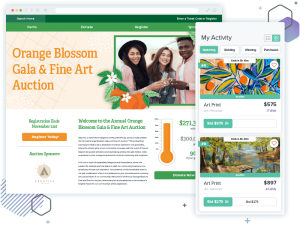Here at Qgiv, we try to bring you the best content about topics like fundraising, online donation pages, and asking for support for your nonprofit. But every now and then, we like to add a fresh voice to the conversation. Please enjoy this guest post by Diana Hoyt of MatchMaker FundRaising Software. She’ll be discussing how to create an effective fundraising plan. Enjoy!
The key to fundraising success is having a plan. Research by the National Research Collaborative demonstrated that organizations that developed a fundraising plan with board input were more likely to meet and even exceed their goals.
Planning brings all the stakeholders in an organization together and creates buy-in for the fundraising strategies and goals. A sense of ownership helps accelerate fulfillment of the fundraising plan.
In approaching the various components of the fundraising plan, an organization needs to look at each part objectively and decide which ones are best implemented now, later, or never.
The organization may be ready for a major gifts campaign and will limit special events to one signature event. If the organization has a growing number of young donors, a mobile giving campaign might be just the answer to engage them.
The more depth a fundraising plan has, the more likely the plan will be successful. Research by the National Research Collaborative has demonstrated that the more fundraising activities implemented by an organization, the more dollars it will raise.
Planning an entire fundraising program around a golf tournament and a year-end appeal is not sufficient.
By providing donors with options, there is a greater possibility that one method will sync with how the donor likes to give. By implementing multiple fundraising activities, the donor can support the organization in various ways over the course of the year.
Applying Fundraising Methods
In applying fundraising methods to the various facets of the plan, careful consideration needs to be made as to what fundraising method will work best:
- Should the organization conduct a direct mail appeal or implement face-to-face solicitation?
- Will a quarterly print newsletter be more effective or would donors prefer a monthly email update?
- Is there a social media plan in place to cultivate donors?
- Will small breakfast encounters have more impact than mass luncheons?
- Does the organization have sufficient resources to execute the plan?
Analyzing Results
Take the time to analyze the results of previous fundraising efforts.
- If the event was successful, why was it successful?
- What were the results when an envelope was included with the spring newsletter?
- Did the email appeal drive donors to the organization’s website?
- Was the text-to-give at the luncheon successful?
- What are the organization’s donor retention numbers?
- Do you software to track, cultivate, thank, and manage donor information efficiently?
There is no magic to fundraising. Planning and implementation are essential. Taking the time to analyze and segment your database and getting to know the organization’s donors are paramount for success.
Fundraising is a lot like building a house. The nonprofit has to build the foundation with a strategic plan. The four walls of a case for support, a donor recognition policy, gift acceptance guidelines, and donor management policies and procedures will provide structure.
Finally, a roof, the fundraising plan, will provide shelter from the economic and political storms within the community and a harbor to raise the dollars needed to execute the organization’s mission.
To create a fundraising plan, go to www.matchmakerfrs.com/fundraising-plan/
Diana Hoyt has over thirty years of professional and volunteer fundraising experience and is President of Heritage Designs, an international software company designing fundraising and donor management solutions for nonprofits. Her chief product, MatchMaker FundRaising Software, has impacted nonprofit organizations for over 17 years. Diana also provides fundraising consulting services and training to nonprofits.


